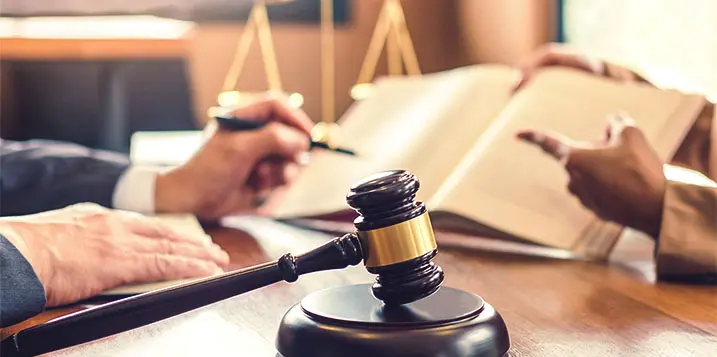Navigating Court Case Steps: A Beginner’s Guide to the Legal Process

For those new to the legal world, navigating a court case can feel overwhelming. The unfamiliarity with each stage—pleadings, discovery, trial procedures, and posttrial actions—often creates a sense of confusion.
In this beginner’s guide, The Process Server (TPS) offers insights to help you understand the basic court case steps. Whether you’re a plaintiff, defendant, or simply seeking knowledge, this guide will clarify each phase, from pretrial conferences to exploring settlement options.
Understanding Court Case Steps
Pleadings and Discovery: Laying the Groundwork
Every court case begins with pleadings, where both parties outline their positions:
- Plaintiff’s Complaint: Initiates the case, detailing the accusations or claims.
- Defendant’s Response: Responds to the complaint, often denying or defending against the claims.
This phase sets the legal scope of the case.
Next is discovery, where both parties exchange evidence and information to understand each other’s case. Discovery tools include:
- Interrogatories: Written questions each party must answer.
- Document Exchanges: Sharing relevant documents.
- Depositions: Formal interviews under oath.
Why Discovery Matters: It clarifies the strengths and weaknesses of each side, helping to shape strategy and potentially opening avenues for settlement.
TPS Insight:
Properly navigating pleadings and discovery can reduce the need for a lengthy trial, saving time and resources.
Pretrial Conferences: A Chance to Strategize
Pretrial conferences are meetings held before the trial begins to streamline the process. In these sessions:
- Judge and Parties Discuss Key Issues: This includes procedural matters and potential settlement options.
- Timeline Is Established: Setting deadlines for discovery, motions, and other pretrial requirements.
- Settlement Opportunities Are Explored: Judges often encourage negotiations to avoid trial.
Pretrial conferences help everyone involved understand what will be addressed at trial, making for a smoother legal process.
TPS Insight:
Being prepared for a pretrial conference can give you an advantage, as it allows you to focus on the key issues, anticipate challenges, and feel more confident heading into trial.
Exploring Settlement Options: Resolving Disputes Out of Court
For many cases, a settlement is a desirable outcome, offering:
- Reduced Costs: Avoiding a full trial can save on legal fees.
- Greater Control: Settlements often allow parties to shape the terms, unlike a court decision.
- Less Stress: Trials can be lengthy and stressful, making settlement a more efficient option.
Settlement can occur informally, through negotiations, or in structured formats such as mediation or arbitration.
TPS Insight:
Settlement negotiations provide a platform for creative solutions that might not be possible in court, making this step an important consideration for many clients.
Key Trial Procedures
Preparing for the Courtroom: The Art of Strategy
When a case goes to trial, preparation is crucial:
- Organize Evidence: Gather all relevant documents, exhibits, and testimonies.
- Plan Your Arguments: Anticipate your opponent’s moves and prepare counterarguments.
- Understand Courtroom Procedures: Familiarity with courtroom etiquette and rules on presenting evidence is vital.
A well-prepared strategy can significantly impact your case’s outcome.
TPS Insight:
Effective trial preparation means practicing opening statements, knowing your evidence inside and out, and staying composed under pressure.
Presenting Evidence and Arguments: Making Your Case
This stage is the heart of the trial:
- Opening Statements: Each side introduces their main arguments.
- Direct and Cross-Examinations: Witnesses are questioned to support each party’s position.
- Closing Arguments: A final opportunity to summarize and persuade.
The goal? Convince the judge or jury of your case’s validity.
TPS Insight:
Strong presentations of evidence and arguments are crucial. The Process Server (TPS) helps clients with effective document management and evidence presentation, ensuring the case is clear and compelling.
Posttrial Actions Explained
Appeals and Judgments: Seeking Justice Beyond Trial
Once the trial concludes, a judgment is issued. If a party believes there was a legal error during the trial, they may file an appeal:
- Appeals: This is not a retrial but a review of the legal grounds of the case.
- Appellate Court Options: They can uphold, reverse, or send the case back for further proceedings.
Appeals are complex and require careful consideration of the legal grounds for seeking a review.
TPS Insight:
TPS assists clients by guiding them through the appeals process, ensuring all legal documentation is accurate and timely.
Collecting Judgments: Enforcing Court Decisions
Winning a judgment doesn’t automatically result in payment. Here’s what the winning party may need to do:
- Garnish Wages: A legal order to deduct from the debtor’s wages.
- Property Liens: Placing a claim on the debtor’s property.
- Asset Seizure: Obtaining permission to claim assets to satisfy the judgment.
Understanding the process of collecting judgments ensures that the awarded amount is enforceable.
TPS Insight:
Navigating judgment collections can be challenging, but TPS provides support to help clients enforce their rights and obtain what they’re legally owed.
Navigating the legal process can be complex, but with the right support, you don’t have to face it alone. The Process Server (TPS) is committed to helping clients through each step, from pleadings to posttrial actions, ensuring clarity, compliance, and confidence every step of the way.
